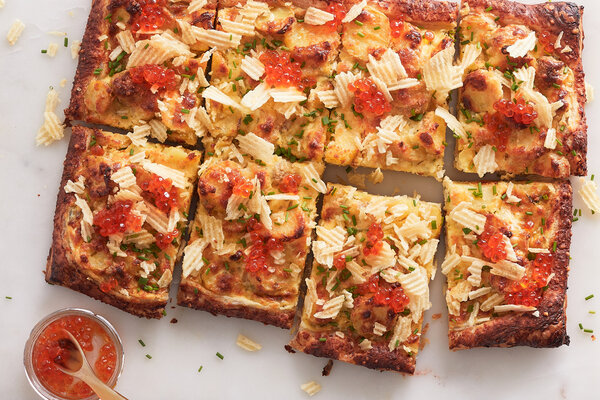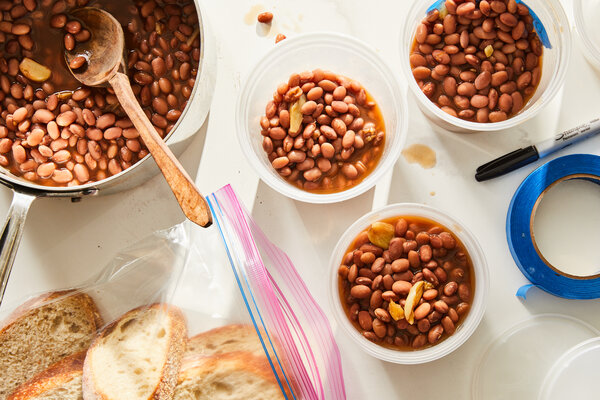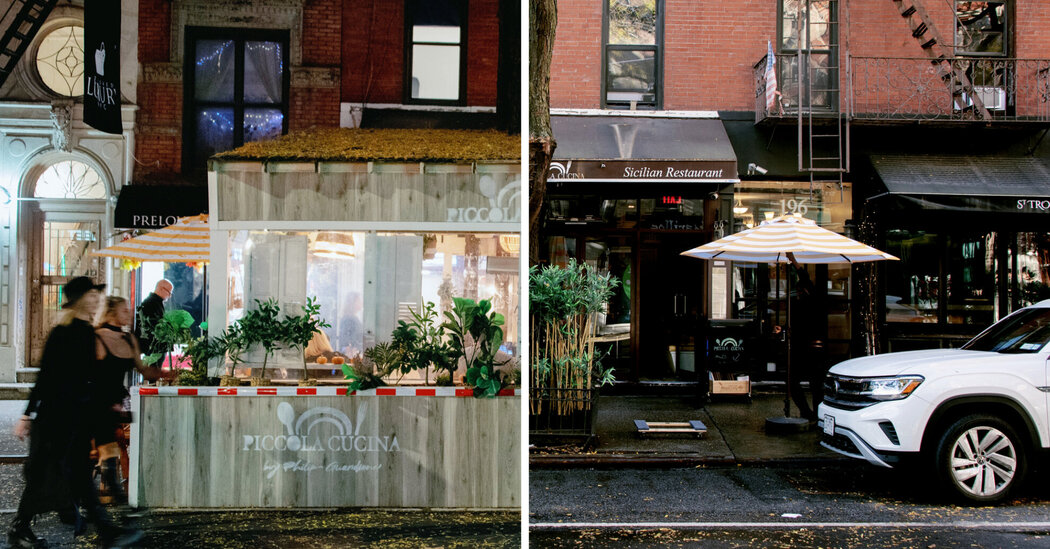In this column, Ask Kenji, the cookbook author Kenji López-Alt answers your questions. This week, he tackles tough questions about yielding tender meat.
Q. I struggle to make good, fall-apart-tender stewed or braised beef. No matter how well I follow the recipe, it ends up tough. So how can you tell when your beef is properly cooked? — Olivia Erliksson, Sweden
A. Olivia, you’re not alone.
Early in my cooking career, with only a few months of restaurant experience under my belt, I thought I’d impress my mother by braising short ribs for Christmas dinner. I’d seen other cooks do it, so I knew the basic process. I spent a day roasting veal bones and mirepoix, reducing wine, and slowly simmering to make a deliciously intense stock as the base. I then seared my short ribs until nicely browned, covered them with the stock and placed them in the oven to braise all day. I, like many cooks, figured there was no such thing as overdoing a braise. If a couple hours of gentle simmering renders them soft and succulent, then surely a day spent in the oven would tenderize them even further.
The Experiment(s)
Clearly, it is possible to overcook braised meats. But what factors affect how a braise cooks? To test this, I started with several pounds of beef chuck, which I cut into 1½-inch cubes. I then seared the cubes, covered them with stock, and cooked them in a Dutch oven with the lid slightly ajar and in an oven set to 275 degrees Fahrenheit (135 degrees Celsius). I pulled chunks from the pot every 30 minutes starting at the one-hour mark and going up to 12 hours, then placed them in small containers along with a ladle of the braising liquid, where they cooled completely before being covered and refrigerated. The next day, I gently reheated the beef cubes and tasted them for texture.
What I found was that, starting at the two-hour mark, the cubes became increasingly tough: Beef braised for two hours was tougher and more rubbery than beef simmered for an hour and a half. Neither was appealing.
Between two and three hours, the beef started showed a drastic and rapid increase in tenderness. While the chunks still held their shape, they were easily separated along the seams with a fork. Chewing them revealed a tender bite that slowly released succulent juices. This is the phase I refer to as “primary breakdown,” and it’s the texture I’d expect for chunkier braises, like beef stew or short ribs.
Three to four hours in, the beef started breaking down even more. Individual cubes started to lose their form. Rather than separating only along their large seams, they shredded into juicy, ropelike strands. I call this phase “secondary breakdown,” and it’s what I’d expect in dishes like Cuban ropa vieja or Mexican barbacoa.
Past the four-hour mark, those strands underwent another noticeable change in texture. Rather than juicy and tender, they became increasingly chalky and tough until, eventually, those individual strands broke down completely, turning into a pulpy mass. This is the phase I call “tertiary breakdown.” The chewing experience was more akin to wringing out a wet towel, the liquid gushing out immediately and leaving behind a dry mass that was difficult to swallow.
What’s going on during each of these phases?
A cut of meat is made up mainly of muscle, connective tissue and fat. The ratio and arrangement of these three can have a big impact on its cooking qualities.
As Harold McGee describes in his food science manual “On Food and Cooking,” individual muscle cells are made up of filaments of the proteins actin and myosin, which are bound together into long, skinny, cablelike bundles. (It’s the motion of these two proteins sliding against each other that causes our muscle cells to contract.) These cells are bound together with sheaths of tough connective tissue into larger bundles, like the fiber-optic cables that carry data under oceans and streets. And these bundles of bundles, in turn, are connected with softer connective tissue and interspersed with swaths of fat.
Primary breakdown occurs when fat renders and liquefies, and softer connective tissue weakens, allowing the beef to be separated along its major seams. During secondary breakdown, the tougher sheaths of connective tissue start to go, and the bundled muscle fibers begin to separate into ropelike strands. Finally, during tertiary breakdown those strands break down into a pulpy mass.
The Takeaways
• Yes, you can undercook and overcook a braise.
• Braising beef for less than two hours tends to yield a tough, rubbery result.
• A two-to-three-hour braise can be ideal for dishes where you want tender, melt-in-your-mouth chunks, like a beef stew, while a three-to-four hour braise can be ideal for a shredded result, like ropa vieja and barbacoa.
• But that’s not necessarily a hard-and-fast rule, depending on the cut of meat: Lean cuts, low in connective tissue, reach tenderness faster than fatty ones, which are high in connective tissue. (Which also means those lean cuts are prone to overcooking.)
• Allowing the meat to protrude from the surface of the braising liquid will increase browning (and therefore flavor), but decreases juiciness a bit.
• Cooling the meat overnight in its own cooking liquid also improves texture.
These first two phases not only tenderize the chunks of meat, but they also improve juiciness: Rendered fat lubricates the muscle fibers (and our tongues), while the tough collagen that comprises connective tissue transforms into rich gelatin that thickens juices and helps them stay put inside the meat as you chew.
So it’s simple then: Cook meat for two to three hours for chunky braises, or three to four hours for shredded stews.
But hang on — my own (thoroughly tested) recipe for ropa vieja, made with relatively lean and meaty flank or sirloin flap as opposed to beef chuck, with its plenty of connective tissue and fat, calls for a mere 2½ hours of cook time for shreddable beef. What gives?
Can the ratio of connective tissue and fat to muscle affect braise time?
To test this, I remembered that fat and connective tissue weigh less than muscle. So by cutting identical cubes of beef and weighing them, I could sort them, knowing that the lighter the cube, the lower its relative density, and therefore the higher the ratio of connective tissue and fat to muscle. I separated the beef into two categories (low and high amounts of connective tissue), and then braised them side by side, again pulling pieces of beef out every half-hour after the two-hour mark.
What I found was that not only does meat lower in connective tissue reach tenderness 30 minutes to an hour faster than meat high in connective tissue, but it is also much more prone to overcooking, quickly going from shreddable and juicy to dry and pulpy.
On the extreme end of this spectrum, cuts from hard-working muscles with a high concentration of connective tissue as a result of their proximity to bones — short ribs and oxtail, for instance — will take a little longer to braise, but are also more forgiving when it comes to overcooking.
But I still had questions.
How much liquid is enough for a braise?
When I braise, I typically add enough liquid (whether stock, wine, tomato sauce, just water, etc.) to come most of the way up the meat, leaving the top exposed. This allows for some browning and flavor development to occur as it braises in the oven. If I plan to serve the meat the next day, I’m also in the habit of allowing the meat to cool in its own liquid, a method drilled into my brain by every restaurant chef I’ve ever worked for. I wondered what, if any, effect those choices actually made on the finished product.
So I started a new braise, this time dividing the beef in half after searing it and placing each half inside a cotton mesh bag before braising. This would allow me to braise the beef in the same pot while making sure that the two batches did not get mixed up. One bag I kept submerged in braising liquid, while the other I placed on a rack so that it was half submerged and half elevated in the braising liquid.
After braising for 2½ hours, I weighed and tasted each batch. The results were pretty stark. The partly submerged batch had much better browning and the deeper flavor that comes with it. Texturally, however, it was drier than the fully submerged beef, losing a full 40 percent of its weight in moisture compared with the submerged beef, which lost 30 percent.
I split the contents of each bag in half. I allowed one half to cool in the open air, while I covered the other half with braising liquid before cooling. I stored both halves in the fridge, then reheated them the next day in braising liquid on the stovetop. As it turned out, my chefs were right: The meat cooled and reheated in its liquid came out far juicier than the meat cooled in the open air. This was true whether the beef had been fully or only partly submerged during cooking.
This is because braised beef acts like a sponge that can hold more moisture the colder it is. As hot beef cools in liquid, it sucks up some of those juices, which remain when you gently reheat it before serving.
The Results
In the end, the practical advice is simple, and it works whether you’re making a boeuf Bourguignon, a pot of Texas red or shredded barbacoa for taco night. After completing any searing and flavor-building steps in a heavy Dutch oven, add enough liquid that the meat is mostly covered, but still has a few bits sticking out to promote extra browning. Partly cover it (to allow for browning and to help regulate temperature), and transfer it to an oven set at 275 degrees to 300 degrees Fahrenheit (135 degrees to 150 degrees Celsius). Let the braise cook at a bare simmer for around 2½ hours (two hours for leaner cuts of meat, like flank steak or flap meat), and then, using a fork, check it for doneness every half-hour after that.
For chunky braises like beef stew or short ribs, take the pot out of the oven as soon as the meat breaks apart easily along the larger seams. For shredded braises like ropa vieja or barbacoa, cook the meat until it shreds into individual fibers. If the meat is still tough, let it cook longer. (If, on the other hand, the meat falls apart too easily and tastes dry or chalky, you’re going to need to find a way to go back in time and remind your past self to take it out of the oven a bit earlier.)
Dig in right away, if you must, but for better, juicier texture, allow the meat to cool in its cooking liquid overnight before gently reheating it the next day.
Of course, this is only the tip of the braised beef iceberg. How does marinating or dry-brining affect cook time? What about oven temperature, or the pH of the braising liquid? Does pork or chicken braise differently from beef? And what do bay leaves taste like anyway?
Keep sending in your questions, and I’ll keep on testing.
askkenji@nytimes.com.







